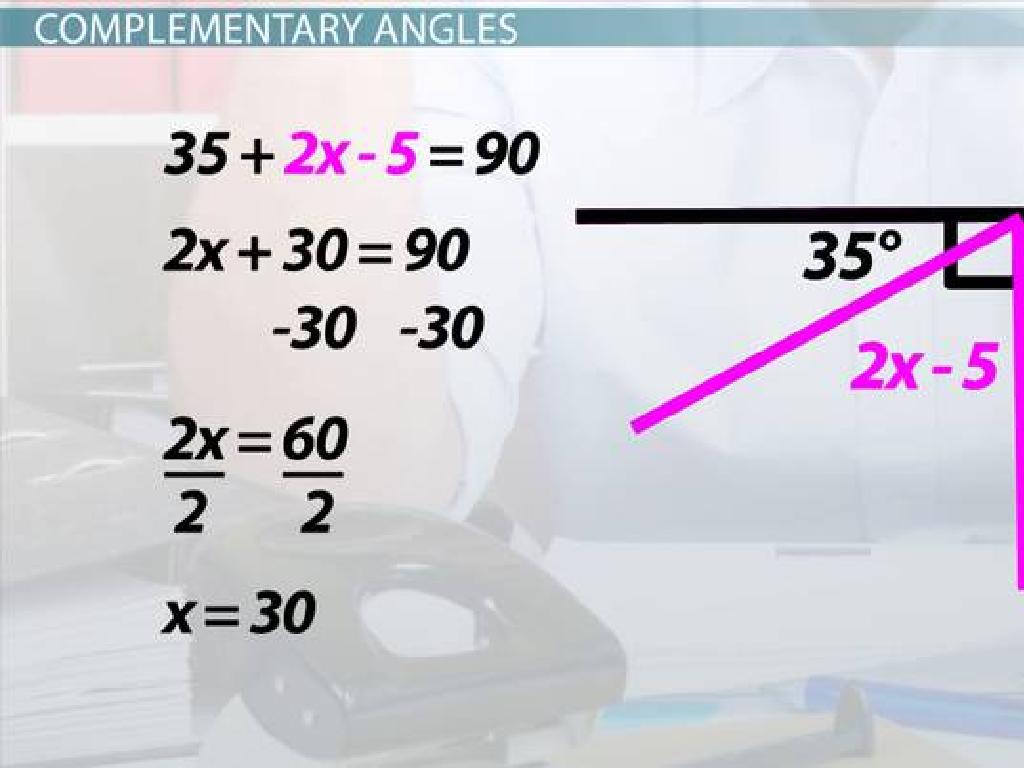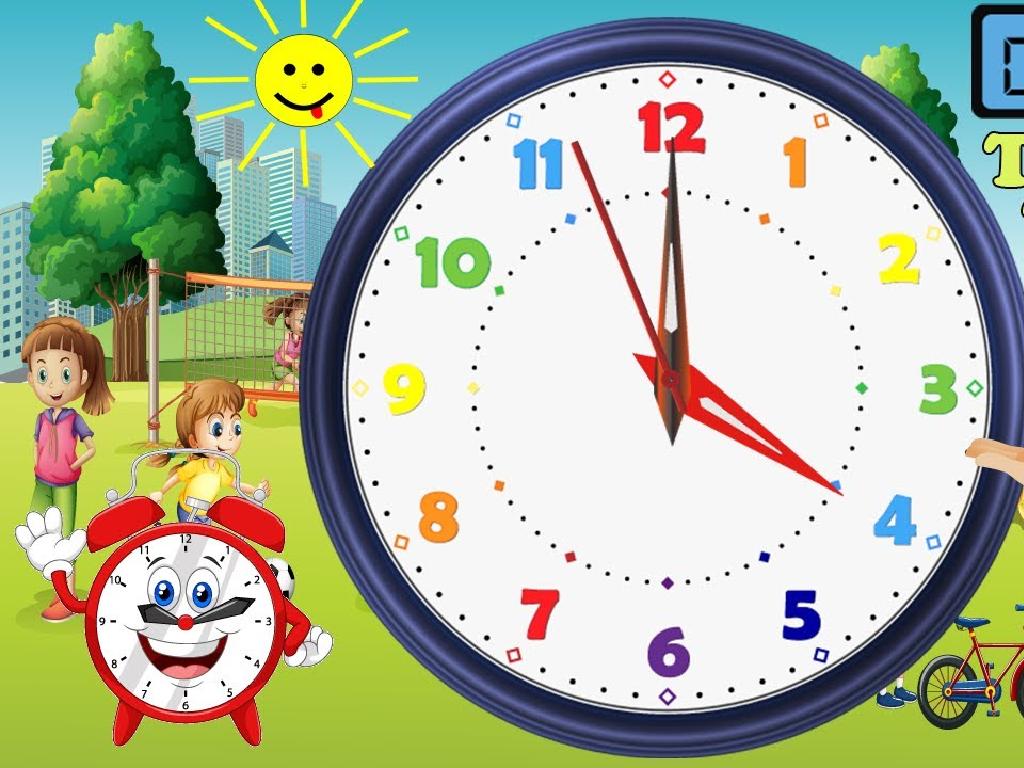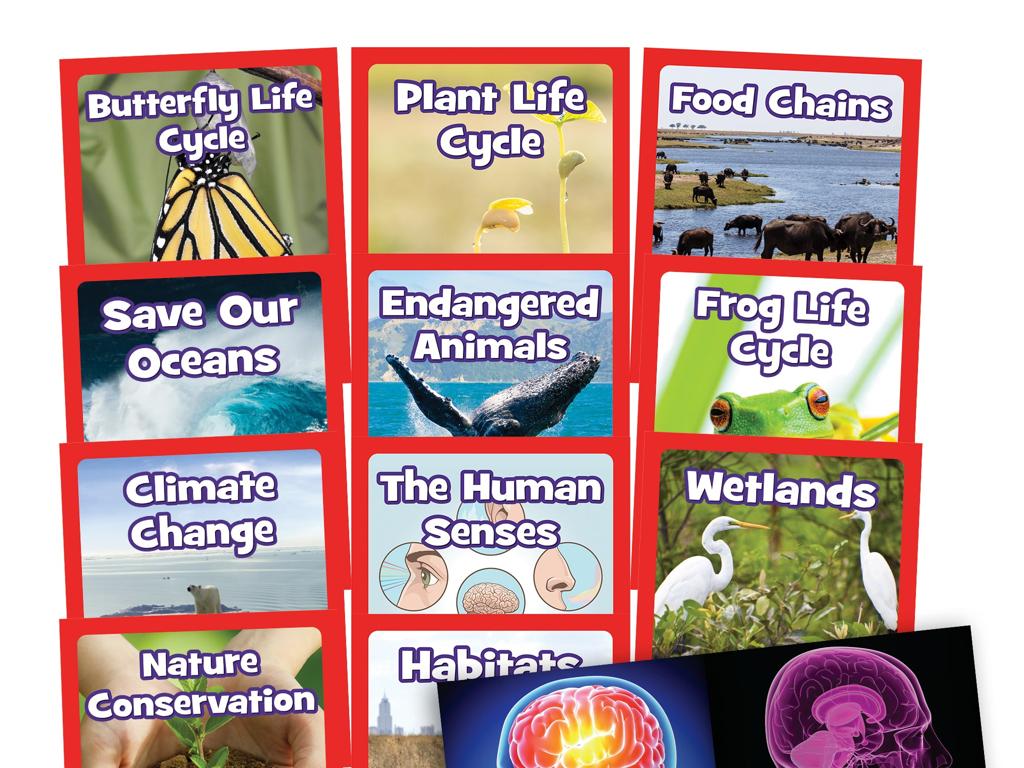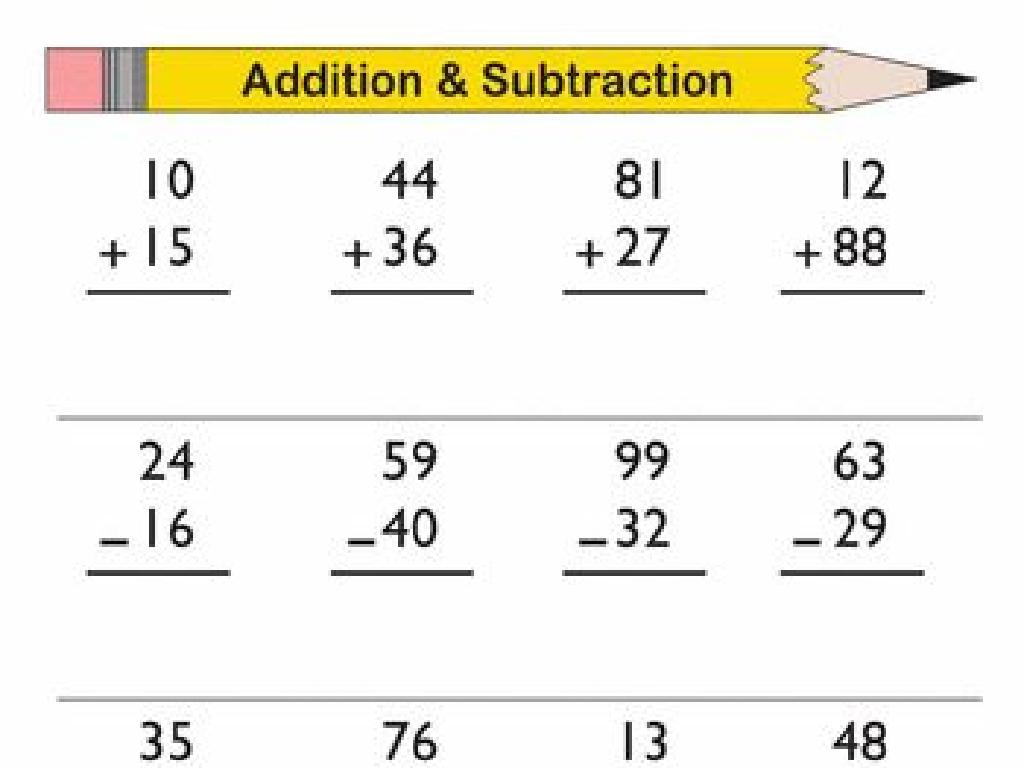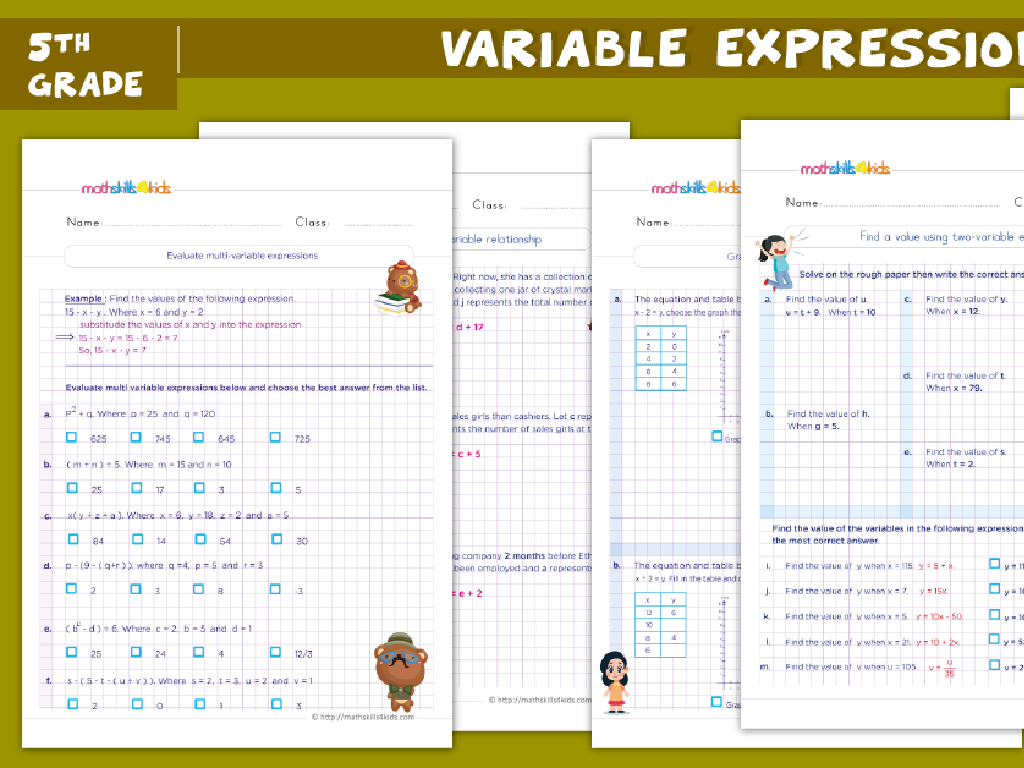Classify Objects By Shape, Color, Material, And Texture
Subject: Science
Grade: Kindergarten
Topic: Materials
Please LOG IN to download the presentation. Access is available to registered users only.
View More Content
Exploring Materials: Shapes, Colors, and Textures
– Greet our little scientists
– Introduction to Materials
– Materials are what things are made from
– Classifying by shape and color
– Shapes can be circles, squares; colors like red, blue
– Classifying by material and texture
– Materials like wood, plastic; textures like smooth, rough
|
Begin the class with a warm welcome to set a friendly atmosphere. Introduce the concept of materials, explaining that everything around us is made from different materials. Engage the children by showing them how to classify common objects by their shape (such as round balls or square boxes) and color (identifying red apples or blue skies). Then, move on to materials, using examples like wooden pencils or plastic toys, and textures, by feeling smooth glass or rough sandpaper. Encourage the children to touch and see objects to understand the concept of texture. The goal is to make them observe and categorize objects based on these characteristics.
Exploring Materials Around Us
– What are materials?
– Everything is made from materials
– Materials we see every day
– Look around to find different materials
– Examples: wood, plastic, metal
– Wood is from trees, plastic is man-made
– Examples: cloth and more
– Cloth is made from fibers like cotton
|
This slide introduces the concept of materials to Kindergarten students. Begin by explaining that materials are the substances things are made from. Use classroom objects as examples to show materials like wood (pencil), plastic (ruler), metal (scissors), and cloth (backpack). Encourage the children to touch and feel the objects to understand the texture. Ask them to look around the classroom or at home to identify objects and the materials they are made from. This activity will help them to start recognizing different materials in their environment and understand the variety of uses for each material.
Shapes Around Us
– Shapes are forms of things
– Spot circles, squares, triangles
– Can you find a clock (circle), window (square), or sign (triangle)?
– Classroom shape hunt
– Let’s find items with these shapes in our room.
– Shapes are everywhere!
|
This slide introduces the concept of shapes to Kindergarten students, emphasizing that shapes are the forms that make up the objects around us. Encourage the students to observe their surroundings and identify common shapes such as circles, squares, and triangles. Organize a classroom activity where students go on a ‘shape hunt’ to find objects that match these shapes. This interactive approach helps students recognize and classify shapes in a familiar environment, reinforcing their understanding of geometry in a fun and engaging way. Make sure to praise their efforts and correct gently if they misidentify shapes, providing the right answer with an explanation.
Colors We Love
– Colors brighten our world
– Name rainbow colors
– Red, orange, yellow, green, blue, indigo, violet
– Match room objects to rainbow
– Find things in class that match these colors
– Discuss favorite colors
|
This slide is aimed at helping Kindergarten students appreciate the beauty of colors and understand how they can classify objects based on color. Start by discussing how colors make our surroundings more beautiful and ask the students if they can name the colors of the rainbow to reinforce color recognition. Then, engage the students in a fun activity where they match objects in the classroom with the colors of the rainbow. This will help them apply their knowledge of colors to real-world objects. Lastly, have a discussion about what their favorite color is and why, encouraging them to express their preferences and opinions.
Exploring Textures
– What is texture?
– Texture is how things feel.
– Examples of textures
– Smooth like glass, rough like sandpaper, soft like a teddy bear.
– Touch and feel activity
– We’ll touch different items to learn their textures.
– Learning texture words
|
This slide introduces the concept of texture to Kindergarten students. Begin by explaining that texture refers to how the surface of an object feels to the touch. Provide tangible examples that children are familiar with, such as the smoothness of a glass window, the roughness of sandpaper, or the softness of a stuffed animal. Engage the students in a hands-on activity where they can touch various objects and describe the textures they feel. Encourage them to use descriptive words and reinforce new vocabulary related to texture. This tactile experience will help solidify their understanding of the concept of texture in a fun and interactive way.
Material Hunt Adventure
– Let’s start our Material Hunt!
– Find objects around us
– Look for things in the classroom or at home
– What material are they made of?
– Is it made of wood, plastic, metal, or fabric?
– Use senses to feel texture
– Is it rough, smooth, soft, or hard?
|
This slide introduces a hands-on class activity called ‘Material Hunt’ where students will search for objects and identify the materials they are made from. Encourage the children to use their sense of touch to explore the texture of each item. Provide guidance on how to classify objects by their material, such as wood, plastic, metal, or fabric, and by their texture, such as rough, smooth, soft, or hard. Prepare a list of suggested objects for children to find if they need help getting started. After the hunt, facilitate a discussion where students can share their findings and reflect on the different materials and textures they encountered.
Classifying Objects by Attributes
– Learn to classify objects
– We’ll look at shape, color, material, and texture
– Sort objects into groups
– Like putting toys in the right bins
– Understand similarities
– See what items are alike
– Recognize differences
– Find out what makes each item unique
|
This slide introduces the concept of classification to Kindergarten students, which is a fundamental skill in science. By classifying objects based on their shape, color, material, and texture, students learn to observe and categorize the world around them. Sorting objects into groups helps them to make sense of the variety they encounter in their environment. It’s a hands-on activity that encourages critical thinking and observation skills. Teachers should prepare a range of objects for the students to classify and provide clear examples of each attribute. Encourage the children to touch, feel, and look at the objects closely as they sort them. This activity lays the groundwork for understanding more complex scientific concepts in the future.
Class Activity: Sorting Fun!
– Let’s sort objects together!
– Bins for shapes, colors, materials, textures
– Each bin is labeled for a specific category
– Classify objects with friends
– Work in teams to find where each object belongs
– Enjoy our Material Hunt
– Find and sort items from around the classroom
|
This activity is designed to be a hands-on experience for students to learn about classifying objects. Set up bins around the classroom, each labeled with either a shape, color, material, or texture. Divide the class into small groups and provide a collection of objects for them to sort. Encourage the children to discuss with their peers why they think an object belongs in a particular bin. This collaborative effort helps them understand the concept of classification and properties of objects. Possible objects for the Material Hunt can include a rubber ball, cotton cloth, wooden block, metal spoon, etc. Ensure that the objects are safe for kindergarten use. The goal is for students to have fun while engaging with the lesson and to reinforce their understanding of the different categories.
Review: Classifying Objects Like Scientists!
– Celebrate our learning today
– Review object classification
– We grouped objects based on their features
– Sorting by shape and color
– Circles, squares; red, blue, and more
– Sorting by material and texture
– Wood, plastic, soft, rough, and others
|
This slide is a recap of the day’s lesson, aimed at reinforcing the concepts of classification by shape, color, material, and texture. Start by praising the children for their hard work. Then, revisit the main points of the lesson, asking the children to recall how they sorted different objects. Use physical examples or images of objects to visually remind them of the categories. Encourage the children to think about the characteristics of each group and to explain their sorting choices. This review will help solidify their understanding and prepare them for further exploration of materials and their properties.
Goodbye and Remember: Exploring Materials
– Great job in today’s class!
– Observe the world & its materials
– Look at objects you find and guess what they’re made of
– Think about shapes, colors, and textures
– Is it round or square? Red or blue? Rough or smooth?
– Excited to see you next time!
|
As we conclude today’s class, reinforce the excitement of learning by praising the students for their participation. Encourage them to continue observing and thinking about the materials that make up the objects they see every day. Prompt them to consider the shape, color, material, and texture of items they come across at home or outside. This will help solidify their understanding and prepare them for the next class. Make sure to express your eagerness to see their continued curiosity and learning in the next session.

